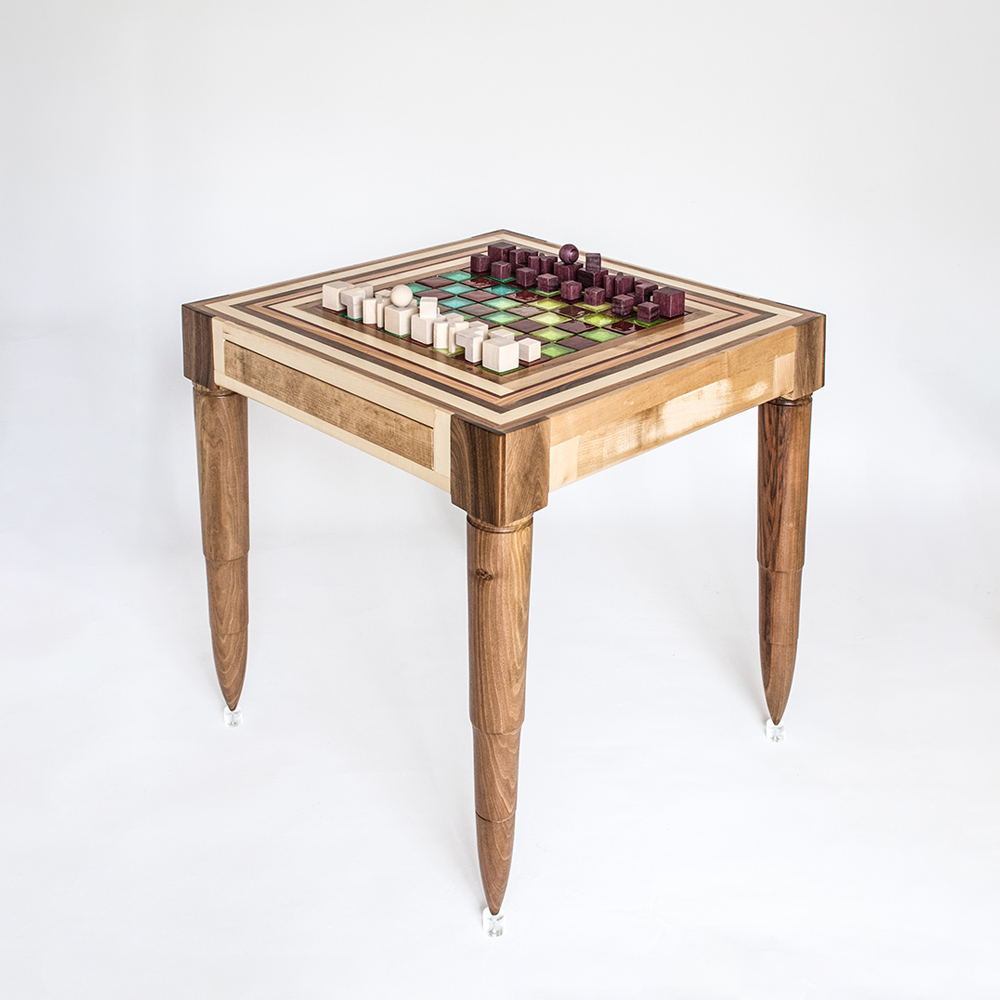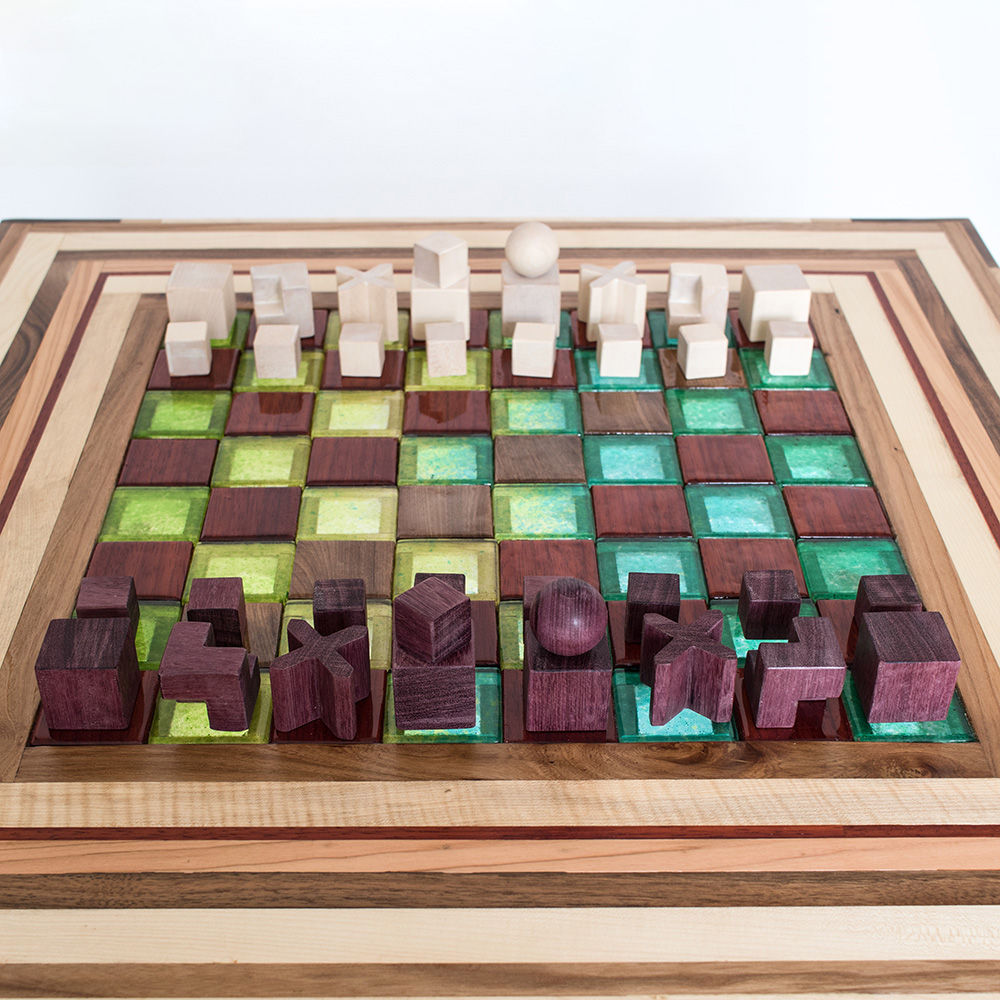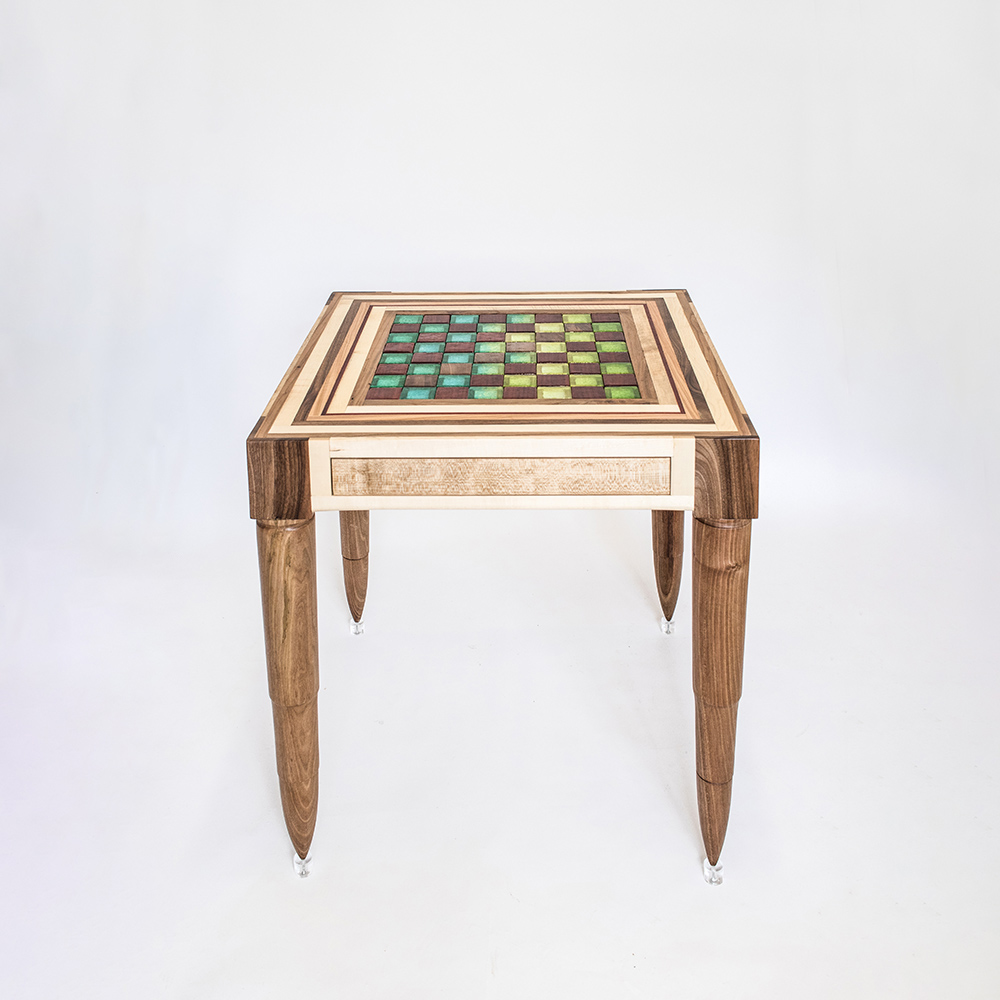Chaturanga Chess Table
The Chaturanga Chess Table is a hybrid piece that works perfectly both as a game and a table. Being one of the most beautiful, abstract, strategical and peaceful games known, chess has a long and complex history.
Visually, Hillsideout shows this historical complexity with three main elements. Firstly, the wooden legs references the form of a cartridge which’s projectile is blocked by a piece of acrylic. Secondly, the chessboard’s boxes in green Murano glass and red wood recall the “chatrang”. This was a famous game played by Arabs with red (ruby) and green (emerald) stones. The Persian name “chatrang” derives from the Sanskrit word “chaturanga”, which probably refers to a very old Indian game. This game used four elements of the Indian army as checkers: soldiers, horses, chariots and elephants. Lastly, the actual chess set is in the typical and timeless Bauhaus style, eliminating any symbolic association to war or metaphors to a battlefield. It features shapes like cubes, cylinders and balls in order to concentrate on its true functionality.
As in all Hillsideout’s pieces, the Chaturanga Chess Table references the designers’ personal story. Hillsideout used to work with a tuner, a very old and fascinating artisan. As a child, he grew up in the Bolognese Apennines, a place known for being the hiding spot of Partisan fighters during World War II. Usually, they asked him to tune antique forms like balustrades; but one day they asked him to tune a big gun bullet. This peaceful man did it with his eyes closed! He vividly remembered how many projectiles he found in these mountains during his childhood.
When he passed away a few years ago, Hillsideout still had his table legs. It was hard to imagine an appropriate use considering its controversial symbolism. Well, time passed and the designers got more and more convinced of the contemporary social importance of table games. By the end, the Chaturanga Chess Table turned out to be a visual statement by Hillsideout.
Price on request
















